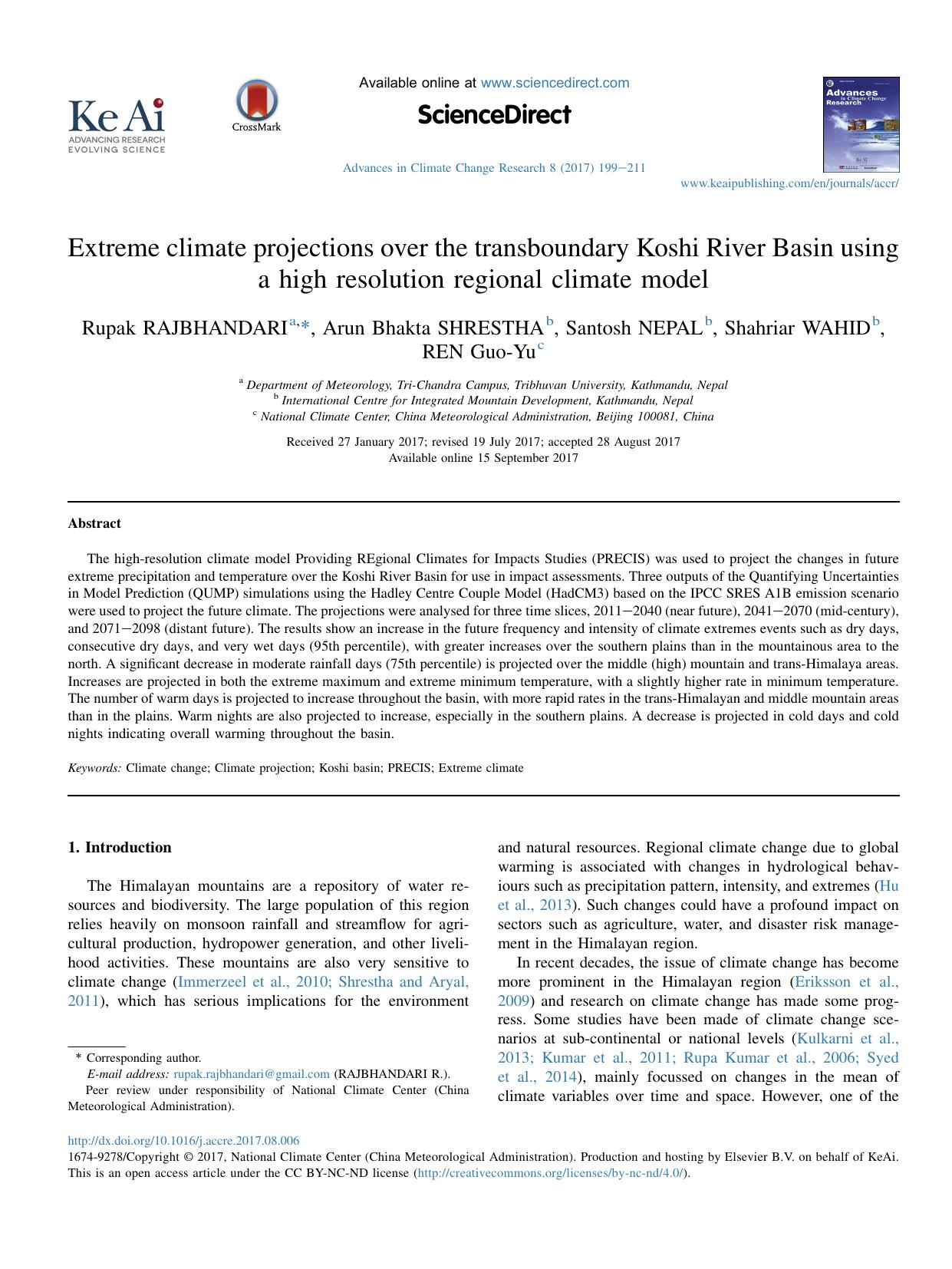
The high-resolution climate model Providing REgional Climates for Impacts Studies (PRECIS) was used to project the changes in future extreme precipitation and temperature over the Koshi River Basin for use in impact assessments. Three outputs of the Quantifying Uncertainties in Model Prediction (QUMP) simulations using the Hadley Centre Couple Model (HadCM3) based on the IPCC SRES A1B emission scenario were used to project the future climate. The projections were analysed for three time slices, 2011–2040 (near future), 2041–2070 (mid-century), and 2071–2098 (distant future). The results show an increase in the future frequency and intensity of climate extremes events such as dry days, consecutive dry days, and very wet days (95th percentile), with greater increases over the southern plains than in the mountainous area to the north. A significant decrease in moderate rainfall days (75th percentile) is projected over the middle (high) mountain and trans-Himalaya areas. Increases are projected in both the extreme maximum and extreme minimum temperature, with a slightly higher rate in minimum temperature. The number of warm days is projected to increase throughout the basin, with more rapid rates in the trans-Himalayan and middle mountain areas than in the plains. Warm nights are also projected to increase, especially in the southern plains. A decrease is projected in cold days and cold nights indicating overall warming throughout the basin.